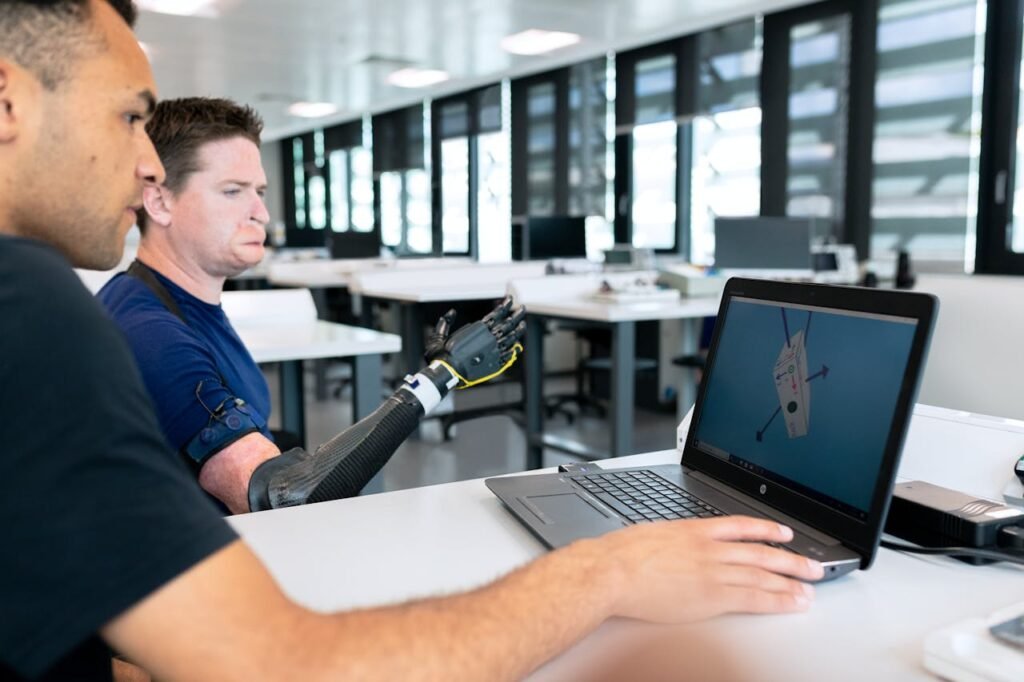For decades, prosthetics have offered individuals with limb loss a way to regain mobility and independence. While traditional prosthetics have served as a reliable option, they are not without their challenges. Discomfort, socket fit issues, and limited functionality often hinder users from achieving the level of freedom they desire. Enter osseointegrated prosthetics—a groundbreaking alternative that is reshaping the landscape of prosthetic technology.
Osseointegration directly connects a prosthetic to the body’s skeletal system, offering enhanced stability, comfort, and functionality. It’s an innovative solution with the potential to transform lives. But is it the right choice for you? In this article, we’ll explore what osseointegrated prosthetics are, how they work, their benefits and challenges, and the factors to consider before making a decision.
Understanding Osseointegrated Prosthetics
Osseointegration is a surgical procedure that involves anchoring a prosthetic device directly to the bone. Unlike traditional prosthetics, which rely on a socket to attach the device to the residual limb, osseointegration creates a permanent connection between the prosthetic and the skeleton.
How It Works
The procedure typically involves two stages. In the first stage, a titanium implant is surgically inserted into the bone of the residual limb. Over the course of several months, the bone grows around the implant, creating a secure and stable connection. This healing period is critical to ensure the success of the integration process.
In the second stage, an abutment is attached to the implant, extending outside the skin to serve as the connection point for the prosthetic device.
Once the prosthetic is attached, the user can begin adapting to their new system, often with the help of physical therapy to build strength and coordination.
A Revolutionary Approach
Osseointegration represents a paradigm shift in prosthetic technology. By eliminating the need for a socket, it addresses many of the common challenges associated with traditional prosthetics, such as discomfort, pressure sores, and difficulty achieving a secure fit.
For individuals with an active lifestyle or those seeking a more natural movement experience, osseointegration offers significant advantages.
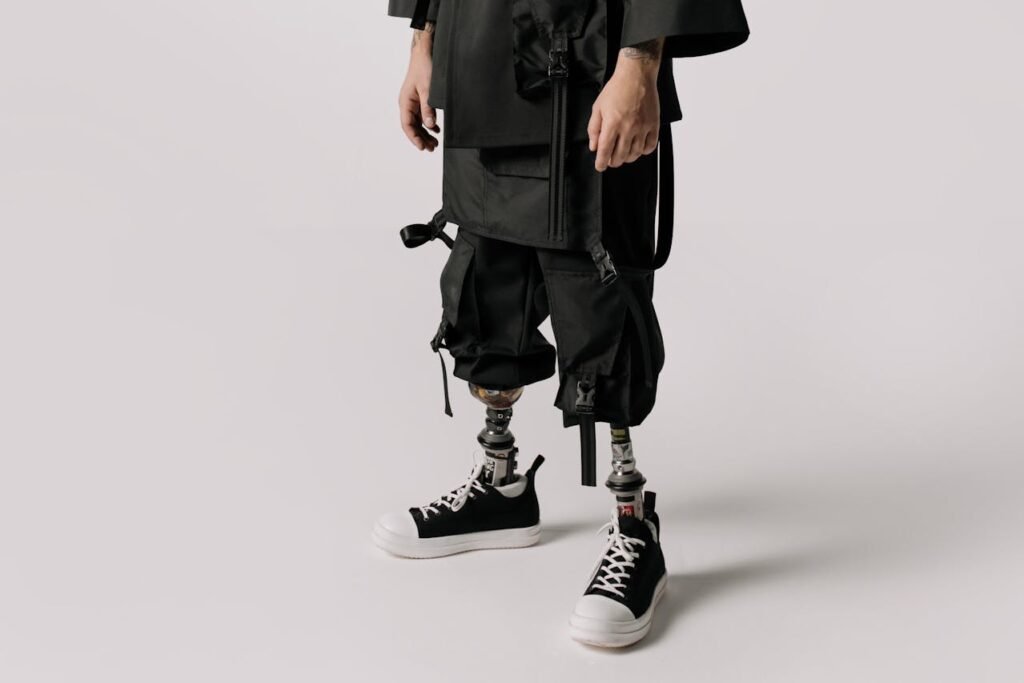
Benefits of Osseointegrated Prosthetics
The appeal of osseointegrated prosthetics lies in the multitude of benefits they offer. From improved comfort to enhanced functionality, these devices provide a level of freedom and reliability that many users find life-changing.
Improved Comfort and Fit
One of the most significant advantages of osseointegration is the elimination of socket-related issues. Traditional prosthetics rely on a socket to attach the device to the residual limb, which can cause discomfort, chafing, and even pain. Poor socket fit is a common problem, often requiring repeated adjustments or replacements.
Osseointegration removes the need for a socket entirely. By anchoring the prosthetic directly to the bone, it provides a secure and stable connection that adapts naturally to the user’s body.
This reduces friction, pressure sores, and the overall discomfort associated with socket-based systems.
Enhanced Mobility and Functionality
Osseointegrated prosthetics are designed to move in harmony with the body’s natural mechanics. The direct connection to the skeleton allows for improved control and responsiveness, enabling users to perform a wider range of activities with greater ease.
For example, individuals with osseointegrated leg prosthetics often report smoother walking patterns and reduced energy expenditure compared to socket-based systems. Similarly, users of osseointegrated arm prosthetics experience greater precision and strength in their movements.
Improved Sensory Feedback
Another notable benefit is the potential for enhanced sensory feedback. Because the prosthetic is connected to the bone, users can often perceive vibrations and other sensations through the device. This feedback helps improve balance and coordination, creating a more intuitive experience.
For businesses, emphasizing this unique advantage in marketing materials can resonate with users seeking a prosthetic that feels like an extension of their body.
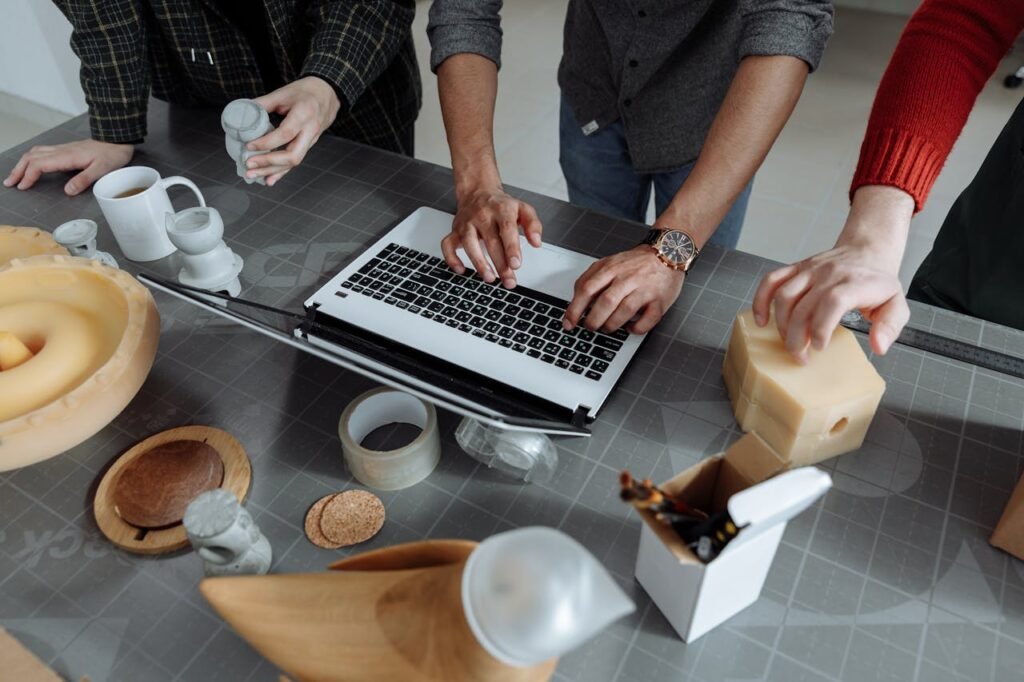
Challenges and Considerations
While osseointegrated prosthetics offer numerous benefits, they are not without challenges. Understanding these potential drawbacks is essential for making an informed decision.
Surgical Risks and Recovery
Osseointegration involves a surgical procedure, which carries inherent risks such as infection, bone fractures, and implant rejection. The recovery process can be lengthy, requiring months of healing and rehabilitation before the prosthetic can be fully utilized.
For businesses, providing comprehensive educational resources about the surgical process and recovery expectations is crucial. Offering support services, such as connections to qualified surgeons and rehabilitation programs, can help users navigate these challenges with confidence.
Cost and Accessibility
Osseointegrated prosthetics are often more expensive than traditional options due to the complexity of the procedure and the advanced materials used. Additionally, they may not be covered by all insurance plans, making affordability a concern for many users.
Businesses can address this challenge by exploring financing options, partnerships with healthcare providers, and initiatives to make these devices more accessible.
Highlighting the long-term benefits and potential cost savings—such as reduced maintenance and adjustments—can also help users see the value of their investment.
Maintenance and Hygiene
Osseointegrated prosthetics, while eliminating the challenges of socket systems, require diligent maintenance and hygiene. The point where the abutment exits the skin—known as the percutaneous interface—needs to be kept clean to prevent infections.
This daily care routine can feel demanding for some users, particularly those with busy lifestyles or limited access to healthcare facilities.
To address these concerns, businesses can develop educational programs and user-friendly cleaning kits that simplify the process. By empowering users with the tools and knowledge they need to maintain their prosthetics, companies can improve outcomes and foster a positive experience.
Additionally, innovations in antimicrobial coatings or self-cleaning technologies could further enhance the long-term success of osseointegrated systems.
Not Suitable for Everyone
Osseointegration is not a universal solution. Factors such as bone density, overall health, and the length of the residual limb can affect a candidate’s suitability for the procedure. Conditions like osteoporosis or diabetes may increase risks, and not all users are willing to undergo the surgical process required.
For businesses, working closely with medical professionals to provide pre-screening tools and personalized consultations can help identify the right candidates.
Clear communication about the procedure’s risks and benefits ensures that users have realistic expectations and can make informed decisions.
Innovations Driving Osseointegration
The field of osseointegrated prosthetics continues to evolve, with innovations making the technology more effective, accessible, and versatile. For businesses, staying at the forefront of these advancements is key to delivering value to users and maintaining a competitive edge.
Enhanced Materials for Durability
One of the most exciting areas of development is the use of advanced materials to improve the durability and performance of implants. For instance, titanium remains a standard choice due to its biocompatibility and strength, but researchers are now exploring composites that mimic the flexibility of natural bone.
These materials can reduce the risk of fractures and improve the long-term success of the implant.
For businesses, investing in R&D to adopt or co-develop these materials ensures that their products stand out in terms of reliability and innovation. Marketing efforts can highlight these advancements, appealing to users seeking durable, state-of-the-art solutions.
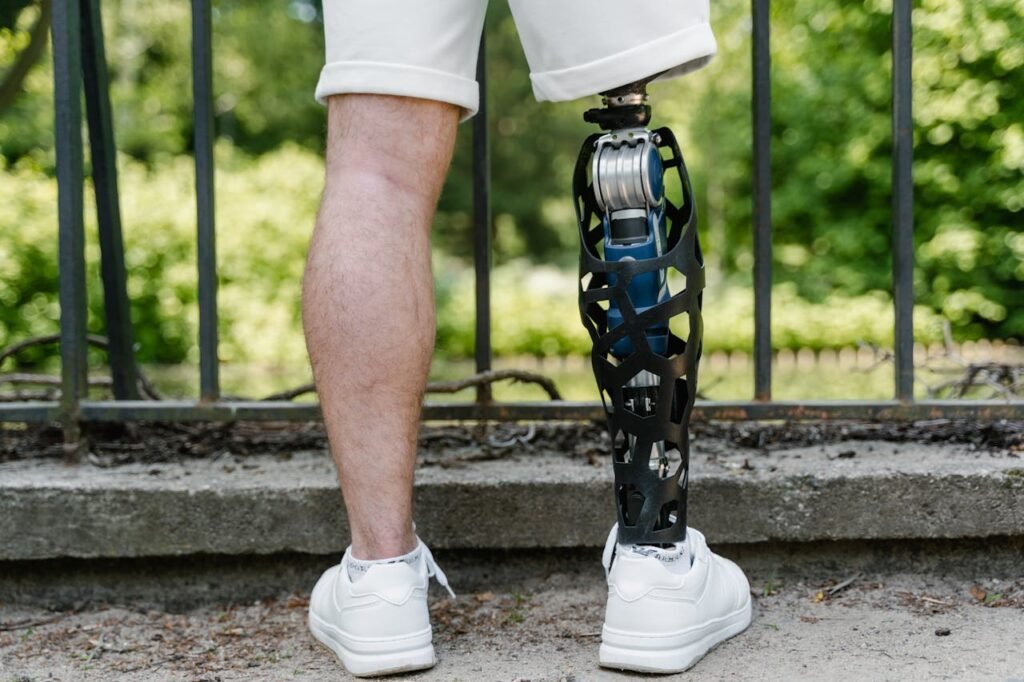
Integration with Smart Prosthetics
Osseointegrated systems are increasingly being combined with smart prosthetics to create devices that offer advanced functionality. These smart prosthetics incorporate sensors, microprocessors, and machine learning algorithms to enhance movement and control.
When paired with osseointegration, they unlock even greater potential by utilizing the direct skeletal connection for precise responsiveness.
For example, a smart prosthetic leg connected via osseointegration can adjust in real time to changes in terrain, providing stability and comfort during walking or running. Similarly, an osseointegrated arm prosthetic can offer fine motor control for tasks like typing or cooking.
Businesses that integrate these technologies into their offerings can cater to users who value cutting-edge functionality. Collaborations with tech firms or research institutions can accelerate the development of these systems, ensuring that users benefit from the latest advancements.
Neural Integration for Enhanced Control
Another promising development is the integration of neural interfaces with osseointegrated prosthetics. These interfaces connect the prosthetic device directly to the user’s nervous system, allowing for intuitive control and improved sensory feedback.
For instance, users can manipulate their prosthetic hand by simply thinking about the desired movement, while also perceiving tactile sensations like pressure or texture. This technology represents a significant leap forward, particularly for individuals seeking a more natural and seamless prosthetic experience.
Businesses that invest in neural integration research can position themselves as pioneers in the field, creating devices that redefine the standard for functionality and user satisfaction.
Is Osseointegration Right for You?
Choosing an osseointegrated prosthetic is a deeply personal decision that depends on a variety of factors. While the technology offers life-changing benefits for many users, it’s important to weigh the potential challenges and consult with medical professionals to determine if it’s the right fit for your needs.
Key Factors to Consider
- Lifestyle: Osseointegration is particularly beneficial for individuals with active lifestyles or those who require a high level of functionality in their daily activities. If you engage in sports, physically demanding jobs, or recreational activities, this technology can provide the stability and adaptability you need.
- Health Status: Good bone health and overall physical fitness are essential for the success of osseointegration. Pre-surgical evaluations will determine if your body is well-suited for the procedure.
- Commitment to Care: Maintaining an osseointegrated prosthetic requires a commitment to hygiene and regular check-ups. If you are prepared to adopt this routine, you’ll be better positioned to enjoy the long-term benefits of the technology.
The Consultation Process
The first step in exploring osseointegration is scheduling a consultation with a qualified surgeon or prosthetist. During this meeting, you’ll discuss your medical history, lifestyle goals, and expectations. Advanced imaging techniques may be used to assess your bone density and determine your suitability for the procedure.
Businesses that offer comprehensive support during this decision-making process can build trust and ensure a positive experience. Providing access to educational materials, success stories, and expert advice helps users feel confident in their choice.
Supporting Long-Term Success with Osseointegrated Prosthetics
Choosing osseointegration is just the beginning of a transformative journey. To fully benefit from this advanced technology, users must navigate the phases of recovery, adaptation, and long-term care. Businesses and healthcare providers play a vital role in supporting users throughout this process, ensuring that they achieve the best possible outcomes.
Post-Surgery Recovery and Rehabilitation
The recovery period after osseointegration surgery is critical for the success of the implant. Following the procedure, users typically undergo a rehabilitation program designed to strengthen the residual limb, promote proper healing, and prepare the body for prosthetic attachment.
Physical therapy is a cornerstone of this phase, helping users regain mobility and adapt to the new system. For instance, individuals with osseointegrated leg prosthetics may engage in balance training and gait exercises to achieve smooth, natural movement.

Similarly, users of osseointegrated arm prosthetics may practice fine motor tasks to build precision and confidence.
For businesses, collaborating with rehabilitation centers to develop targeted therapy programs can enhance user outcomes. Offering detailed guides, videos, or interactive apps that walk users through recovery exercises adds significant value and fosters trust in the product.
Adaptation and Ongoing Support
Once the prosthetic is attached, users begin the process of adapting to their new device. This stage involves learning how to operate the prosthetic effectively and incorporating it into daily activities.
While the direct connection to the skeleton provides a more intuitive experience, some users may need time to adjust to the increased sensory feedback or changes in weight distribution.
Providing access to technical support during this phase is essential. Businesses can establish dedicated helplines, virtual consultations, or in-person sessions to address user concerns and ensure smooth transitions.
Additionally, fostering online communities where users can share tips and experiences can create a sense of belonging and encouragement.
Ensuring Long-Term Care
Maintaining an osseointegrated prosthetic requires ongoing care and monitoring. Users must adopt a consistent hygiene routine to minimize the risk of infection at the percutaneous interface.
Regular check-ups with healthcare providers are also important to assess the health of the implant and address any emerging issues.
Businesses can support long-term care by developing user-friendly maintenance kits that include cleaning supplies and instructional materials.
Offering subscription-based services for replacement parts or upgrades ensures that users always have access to the latest innovations, extending the lifespan of their prosthetics.
The Role of Businesses in Advancing Osseointegration
Osseointegration is a rapidly evolving field, and businesses have a unique opportunity to drive its growth while making a meaningful impact on users’ lives. By prioritizing innovation, education, and accessibility, companies can play a pivotal role in shaping the future of prosthetic technology.
Investing in Research and Development
Continuous innovation is key to improving the effectiveness and appeal of osseointegrated prosthetics. Businesses can invest in research and development to explore areas such as advanced materials, enhanced implant designs, and seamless integration with smart prosthetic systems.
Collaborating with academic institutions and medical professionals can accelerate progress and ensure that new solutions are grounded in scientific expertise. Highlighting these partnerships in marketing efforts also reinforces credibility and trust among users.

Expanding Accessibility
While osseointegration offers transformative benefits, its high cost can limit access for many individuals. Businesses must adopt strategies to make this technology more affordable and widely available.
Exploring options such as tiered pricing models, financing plans, or partnerships with nonprofit organizations can help bridge the gap for underserved populations.
Additionally, advocating for insurance coverage and government subsidies can make osseointegration a viable option for more users.
Educating and Empowering Users
User education is a cornerstone of successful osseointegration. Businesses can develop comprehensive resources that guide individuals through every stage of their journey, from the initial consultation to long-term care.
For example, creating video tutorials, user manuals, or interactive apps that explain the procedure, benefits, and maintenance requirements can empower users to make informed decisions.
Hosting webinars or workshops with medical experts and experienced users also provides valuable insights and fosters a sense of community.
Transforming Lives with Osseointegrated Prosthetics
Osseointegration is more than just a medical innovation—it’s a pathway to greater freedom, confidence, and independence for individuals with limb loss. By offering a stable, comfortable, and responsive connection between the body and the prosthetic, this technology is redefining what prosthetics can achieve.
Addressing Emotional Well-Being
The psychological impact of osseointegrated prosthetics cannot be overstated. For many individuals, the journey of limb loss includes a profound sense of loss—not just of physical capability, but also of identity and self-confidence.
Osseointegration provides a path to rebuild that identity, offering a prosthetic solution that feels more like a natural part of the body.
This renewed sense of self is often accompanied by a boost in confidence, enabling users to re-engage with social and professional activities. For example, someone who once hesitated to attend public events due to discomfort or limited mobility may find themselves actively participating again.
Businesses can support this emotional transformation by offering products that prioritize aesthetics and personalization, ensuring that users feel proud of their prosthetics.
Fostering Independence Through Innovation
Independence is one of the most significant benefits that osseointegrated prosthetics provide. The enhanced stability, improved mobility, and natural feel of these devices empower users to perform daily tasks without the constant adjustments or limitations of traditional systems.
For many, this means regaining the ability to drive, cook, or care for loved ones with minimal assistance.
Businesses can capitalize on this by designing prosthetics that integrate seamlessly into users’ routines. For example, developing intuitive control systems or incorporating smart technologies that learn and adapt to a user’s preferences can make the devices more user-friendly.
Offering training programs or user-friendly apps that guide users through setup and operation ensures that they can maximize the potential of their prosthetics with ease.
Supporting Active Lifestyles
Osseointegration is particularly transformative for individuals with active lifestyles. From athletes to outdoor enthusiasts, the technology enables users to push their physical limits while maintaining comfort and stability.
The direct connection to the bone ensures that the prosthetic moves in harmony with the body, reducing fatigue and enhancing performance in high-impact activities.
For businesses, collaborating with sports organizations or adventure groups to develop activity-specific prosthetics can expand their market reach.
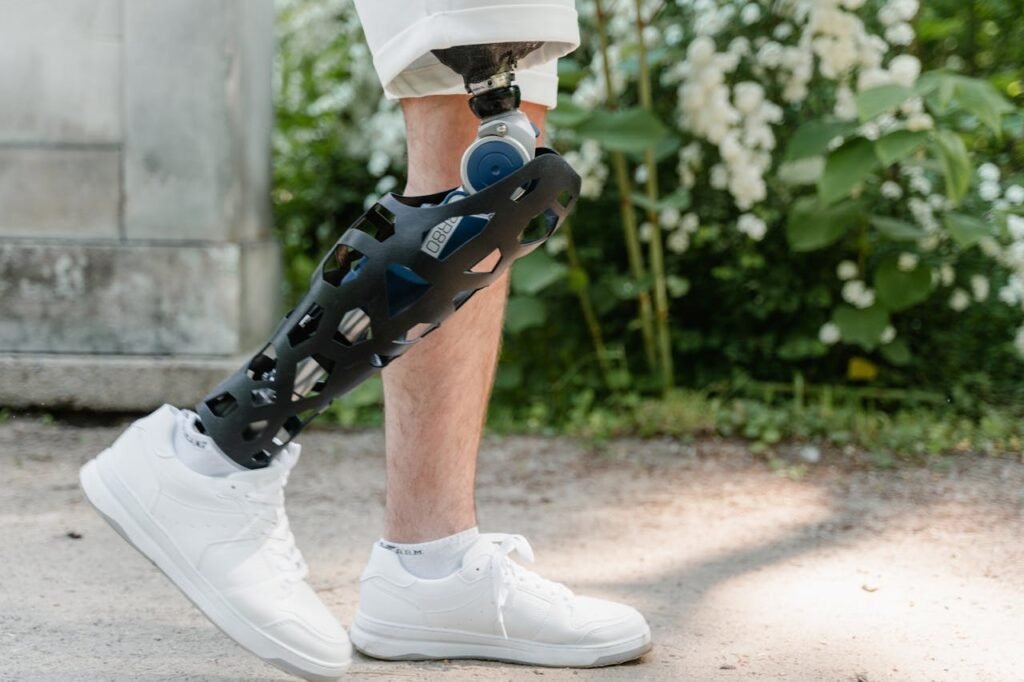
Designing prosthetics that are optimized for activities such as running, swimming, or climbing ensures that users can pursue their passions without compromise.
Additionally, sponsoring athletes who use osseointegrated prosthetics can create powerful brand ambassadors who inspire others while showcasing the product’s capabilities.
Redefining Long-Term Value
One of the long-term impacts of osseointegration is the reduction in maintenance and adjustment needs compared to socket-based systems. Users often experience fewer complications, such as pressure sores or skin irritation, which translates to fewer visits to clinicians and a lower overall cost of ownership.
For businesses, emphasizing this aspect of value in their messaging can resonate with cost-conscious users and decision-makers in healthcare.
Highlighting the durability and longevity of the product—along with available support services—can further reinforce its value proposition. Offering warranties, service plans, or upgrade options ensures that users feel supported throughout the lifespan of their prosthetic.
Empowering Businesses to Lead
For businesses in the prosthetics industry, the transformative potential of osseointegration is an opportunity to lead with innovation, empathy, and vision.
By focusing on user-centered designs, advancing technology, and addressing the emotional dimensions of limb loss, companies can create products that change lives in profound ways.
The journey doesn’t end with the sale of a prosthetic—it extends to ongoing support, education, and engagement. By building relationships with users and fostering a sense of community, businesses can ensure that they remain trusted partners in their customers’ journeys toward greater independence and fulfillment.
Conclusion
Osseointegrated prosthetics represent a remarkable advancement in prosthetic technology, offering a level of comfort, functionality, and natural movement that traditional systems often struggle to achieve.
By directly connecting the prosthetic to the body’s skeletal system, osseointegration eliminates many of the challenges associated with socket-based devices, providing users with a transformative solution that enhances their daily lives.
While the decision to pursue osseointegration is deeply personal and comes with its own set of considerations, the potential benefits—from improved mobility to greater sensory feedback—make it an option worth exploring for many individuals.
The journey involves careful planning, commitment to recovery, and ongoing maintenance, but the rewards can be life-changing.



